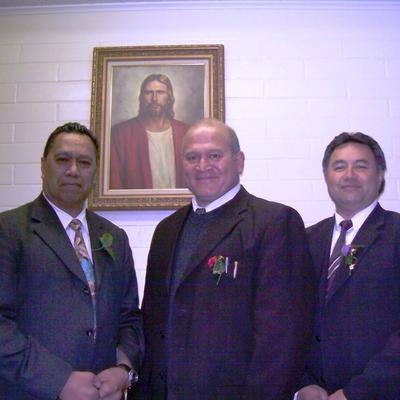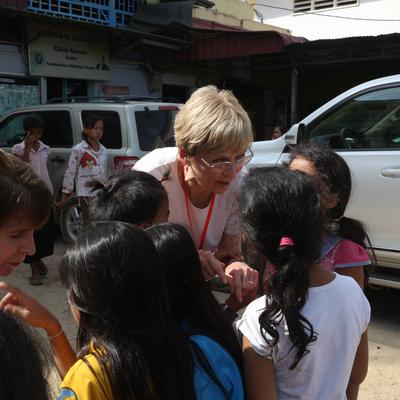The Church is led by 15 apostles. The most senior apostle is the president of the Church, and he selects two other apostles as counselors. These three function as the First Presidency, which is the highest governing body of the Church.
| Temple Square is always beautiful in the springtime. Gardeners work to prepare the ground for General Conference. © 2012 Intellectual Reserve, Inc. All rights reserved. | 1 / 2 |
Twelve others form the Quorum of the Twelve — the second-highest governing body of the Church. Together, the First Presidency and the Twelve oversee the entire Church. Church members trace this organizational structure to the New Testament.
All of the apostles are regarded by Church members as "special witnesses" of Jesus Christ throughout the world. They travel frequently, addressing and encouraging large congregations of members and interested nonmembers and meeting with local leadership.
Leaders called seventies — another New Testament office — assist the Twelve Apostles and serve in various locations throughout the world. There are currently eight quorums of the Seventy. Each quorum may have up to 70 members. Some seventies are assigned to headquarters administrative functions, but most live and work within a specific geographic region of the Church.
See also: "Succession in the Presidency of The Church of Jesus Christ of Latter-day Saints."
Local Congregations
The leader of a congregation is called a bishop. His administrative "parish" is called a ward.

A group of wards forms a stake, and the leader of a stake is a stake president. "Stake" is not a term found in the New Testament, but is taken from Old Testament tent imagery in which the “tent,” or church, is held up by supporting stakes.
Stake presidents and bishops are the leaders most commonly encountered by the broad membership of the Church. These leaders are unsalaried and have a significant amount of local autonomy.
The substantial time and effort required to administer a stake or ward and meet the needs of the members is carried out by the members themselves. Most members are asked by local leaders to contribute in specific capacities. Duties include local administrative, teaching or service-oriented positions. These responsibilities are rotated from time to time. Bishops typically serve for about five years and stake presidents for about nine.
Support Organizations
The Church provides local auxiliary organizations called Relief Society, Sunday School, Young Men, Young Women and Primary.

The Church operates an educational system, a welfare system and a missionary program.